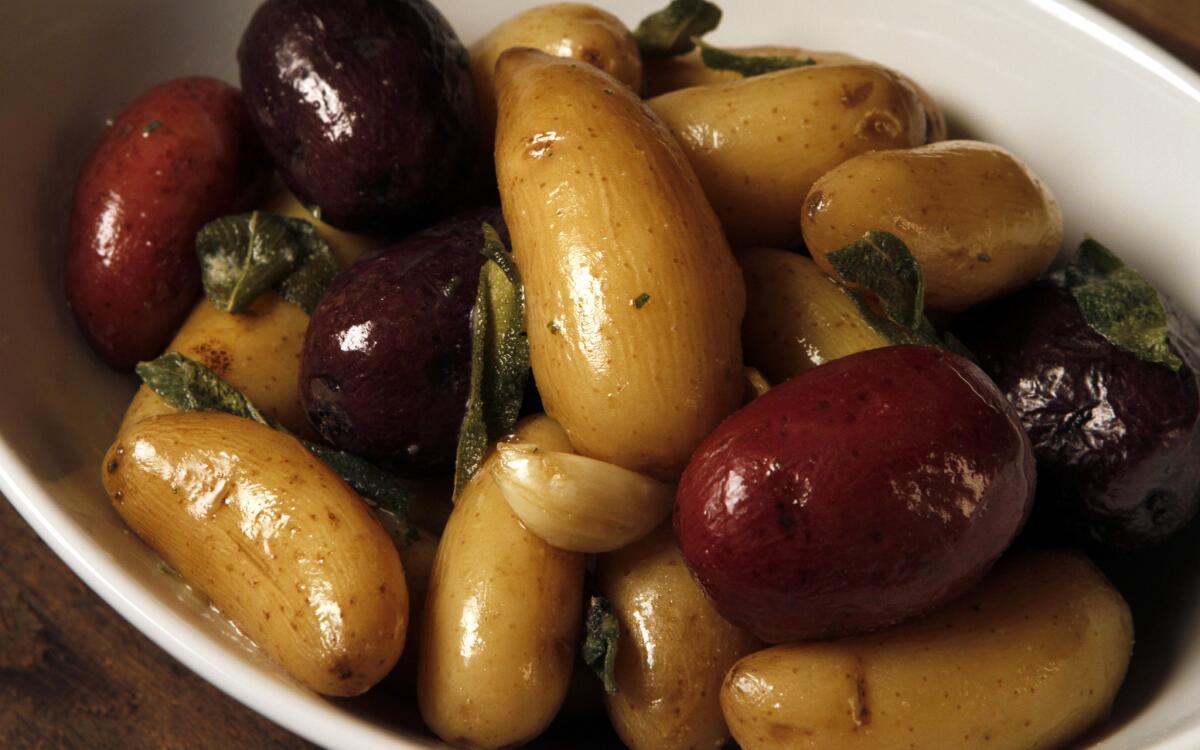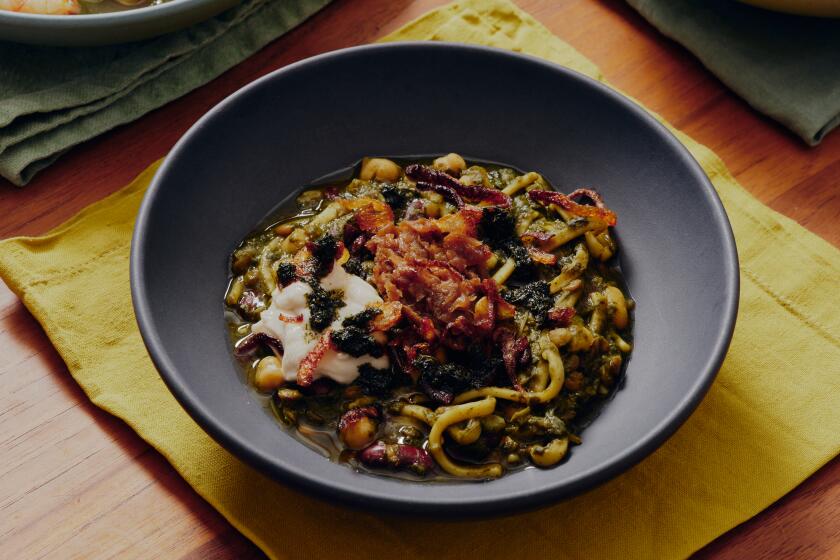New potatoes with sage

In a world overstuffed with weighty, glossy celebrity chef cookbooks, it would be easy to overlook Alain Passard’s newly translated “The Art of Cooking With Vegetables.” But it would be a mistake.
Granted, it’s a slim book -- 100 pages even. There are no tricky Space Age twists -- not a gel, juicer or immersion circulator in sight. And perhaps most damning for some, there isn’t even a single food photograph.
But take it into your kitchen -- and leave it there. This is one of those rare books that might actually change the way you cook.
Passard has always been one to go his own way -- several years ago, he famously decided to stop serving meat at his Michelin three-star restaurant l’Arpege, instead emphasizing produce he grew on his own farm.
Meat was simple, he explained. Vegetables are complex.
But that doesn’t necessarily mean that they’re complicated. Indeed, what’s so shocking about “Art” is just how much Passard gets from simple techniques and ingredients. Again and again, you’ll find that by employing a simple twist, he reveals a wholly unexpected side of an ingredient.
To cook artichokes, he slips fresh bay leaves into the gaps between the leaves, then wraps the chokes in plastic and poaches them in simmering water until tender. The artichokes emerge suffused with the scent of the bay leaves, a lovely, almost smoky, perfume.
New potatoes are blanched and then cooked very gently in butter with garlic and lots (I mean lots) of fresh sage. Somehow, that most aggressive flavor combination mellows and softens and becomes a subtle complement to the earthy flavor of the potatoes.
Maybe the most complicated recipe I’ve tried so far combines beets, crushed blackberries and lavender flowers. The beets are simply boiled and peeled; the blackberries crushed with a fork and simmered to a thin jam consistency with a little soy sauce and balsamic vinegar. Spoon over a dollop of steamed milk and then sprinkle with flowers you’ve stripped from a lavender sprig.
Good as it is, this is also a dish that nearly drove me crazy. The colors are so dramatic that I figured there must be some kind of magical plating the chef had in mind. But I’ll be danged if I could figure out what it was. I tried it several different ways, then finally pooled the sauce on a platter and scattered the quartered beets over them in a pattern I hoped looked arranged but accidental.
This is where a photo of the finished dish would have come in handy. But in the midst of tossing beet wedges here and there and cursing Passard, it occurred to me that by not providing a blueprint, he was forcing me to engage with the recipe in a way I wouldn’t have otherwise.
(You should also be aware that the book expects you to be, er, “interactive” in other ways as well -- Passard is occasionally a bit vague, or even misleading, about basic details such as timings and quantities. Careful attention and common sense will be rewarded.)
I had hoped that eating at l’Arpege on a recent trip to Paris might provide some answers. Instead, it only frustrated me more. There is absolutely no way I will ever in this life produce one plate that is as perfect looking as anything we ate that day.
To put it mildly, I am not an overly visual cook. While I hope my food tastes good, it is the rare guest who comments on the gem-like precision of my plates.
But composing this plate made me think in a different way about how the colors and shapes could complement each other. The beets and blackberries are subtly different shades of deep red (I also think it would be gorgeous made with those bull’s-eye Chioggia beets). Quartering the beets, I noticed that the insides are a slightly lighter shade than the outside. How to play one against the other? How much sauce to use? How should it be presented? And what about that steamed milk? No matter what you do, it’s going to really stand out against the background. Just how visible should the lavender flowers be?
I’m not sure I came up with the exact right answer, but I do know that, however clumsy my arrangement, it tasted fantastic. And I still say that’s the mark of great food.
Put the butter in a small heat-proof casserole or Dutch oven -- preferably made of enameled cast iron -- and set it over gentle heat. Add the sage leaves and, when they soften slightly, after a minute or so, add the garlic and let it soften for 15 to 20 minutes without coloring. During this time, the butter should murmur very gently without burning.
Meanwhile, cook the potatoes in their skins in a separate large saucepan in gently simmering salted water. Test after about 10 minutes. The potatoes should be easily pierced by a small sharp knife. Drain.
Spoon the potatoes gently into the flavored butter in the casserole and leave them to color gently and continue cooking for several minutes.
When ready to serve, season with salt and serve garnished with the sage leaves either as a first course or as an accompaniment.
Get our Cooking newsletter.
Your roundup of inspiring recipes and kitchen tricks.
You may occasionally receive promotional content from the Los Angeles Times.
















